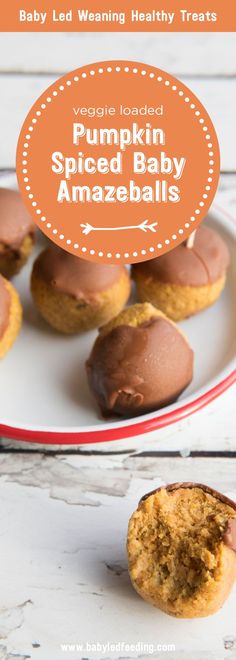Best baby food vegetables
Baby’s First Foods: A Guide to Starting Solids
Which foods should I introduce to my baby first?
For all infants, it’s important to start with iron- and zinc-rich foods. Iron is an important mineral that helps carry oxygen throughout your baby’s body and brain, and zinc aids digestion and helps build a heathy immune system.
Foods that are rich in iron and zinc include:
- Fortified infant cereal
- Pureed chickpeas, lentils, beans and peas
- Pureed meat, poultry and fish
Don’t worry if baby doesn’t eat much at first. These are all new tastes, textures and smells, so it’s normal for them to take it slow or even refuse at first. Keep in mind that breastmilk or infant formula will continue to provide most of your child’s nutrition during the first year of life.
Which vegetables should I try when starting solids for baby?
After your baby gets the hang of eating iron- and zinc-rich foods for a few days, you can move on to trying veggies. When introducing new foods wait 3 to 5 days between each new food to determine whether your child has any reactions to the food offered.
Great first veggies to try:
- Pureed carrots
- Pureed squash
- Pureed broccoli
- Pureed sweet potatoes
- Pureed green beans
Which fruits should I try when starting solids for baby?
After introducing veggies, let baby try 1 single-ingredient fruit at a time. There are plenty of fruits to choose from:
- Pureed apples
- Pureed bananas
- Pureed pears
- Pureed prunes
- Pureed avocado
- Pureed peaches
Once baby has tried a variety of single-ingredient foods, the real fun can begin! You can combine flavors, like peas and carrots, beans and sweet potatoes, or cereal and bananas. Just be sure you don’t mix fruit into everything so they learn to enjoy the taste of foods that aren’t always sweet.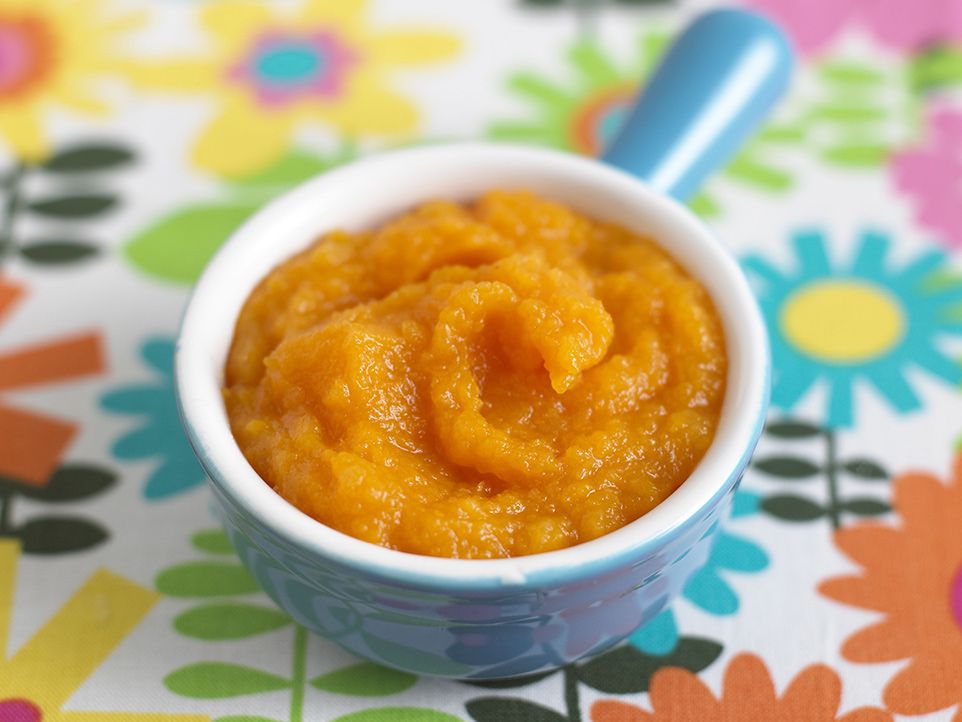
Is introducing allergens to baby safe when starting solids?
Introducing baby to their first foods is an exciting time. Research shows it is also the time to introduce allergen foods because early introduction may help lower your baby’s risk of developing food allergies.
If you have a family history of food allergies, speak with your baby’s doctor before offering. Some top allergen foods to introduce at this time:
- Nut butter: a pea-sized amount mixed into infant cereal or thinned out with breastmilk or infant formula. Exposing baby to a variety of nuts is important—peanut butter, almond butter, cashew butter, etc.
- Dairy products: plain yogurt or cottage cheese
- Eggs
- Fish
- Wheat, such as Cream of Wheat
- Soybeans, such as pureed or mashed tofu and edamame
What to avoid when introducing baby to solid foods
Your baby’s taste buds are brand new, so plain meats, beans, veggies and fruits have the perfect amount of flavor. Your baby does not need sugar or salt added to their food to make it more flavorful.
Your baby does not need sugar or salt added to their food to make it more flavorful.
In fact, added sugar is not recommended until your child is 2 years or older, and too much salt can hurt your baby’s kidneys. Honey is especially dangerous, as it can contain a bacteria that can cause botulism in babies. Botulism can lead to serious complications, such as muscle weakness, breathing problems, extreme tiredness and a weak cry. Adding these ingredients teaches their young taste buds to prefer the flavor of sugar and salt instead of the natural flavor of the food.
Read labels to make sure your baby foods don’t include these added ingredients, and be sure not to add them at home.
Best Vegetables for Babies
We all want our kids to grow up eating a healthy diet — and it’s hard to think of a healthier food than vegetables. Full of complex carbs, fiber, vitamins, minerals, and antioxidants, veggies are a dietary building block of wellness, even for very young children.
But the question always follows: Can you actually get your kid to like vegetables? The battle over a plate of veggies is a classic parent-child power struggle.
Here’s how to not only choose the best veggies for your baby, but prepare them in ways that will help your kiddo become a veggie lover for life.
For babies just starting to eat solids (around 6 months or so), try these six softer, blendable veggies.
Carrots
Bugs Bunny’s fave orange veggies are a baby food staple for good reason. Once cooked, carrots puree beautifully and offer a not-too-piquant flavor for baby’s sensitive palate.
Plus, they contain plenty of fiber to promote healthy digestion, as well as beta carotene, which converts to vitamin A to boost vision and immune function.
Spinach
Speaking of cartoon characters’ favorite vegetables, remember Popeye’s love for spinach? This leafy green deserves its cartoon reputation for being rich in iron — a nutrient babies especially need for energy and development.
Cooked, pureed spinach is best for younger infants. Add a sprinkle of salt to enhance taste.
Pumpkin
Pumpkin may bring to mind chilly temperatures and falling leaves, but with canned varieties, your child can enjoy the gourds any time of year. Pureed pumpkin’s smooth texture is ideal as one of baby’s first foods, and high amounts of A and C round out its nutrient profile.
Avocados
Avocados are the heroes of healthy monounsaturated fats. These important macronutrients help develop baby’s brain and nervous system, as well as increase absorption of fat-soluble vitamins A, D, E, and K. Meanwhile, each serving of avocado comes with a sizable dose of fiber and folate.
Keep in mind that a little bit of high fat avocado goes a long way. Start with a serving of about 1 tablespoon, mashed.
Sweet potatoes
Mashed cooked sweet potatoes not only make for easy-peasy serving to your little one, they’re loaded with nutrients, too! Like carrots and pumpkin, sweet potatoes burst with immune- and vision-supporting vitamin A, plus plenty of fiber, manganese, vitamin B6, and vitamin C.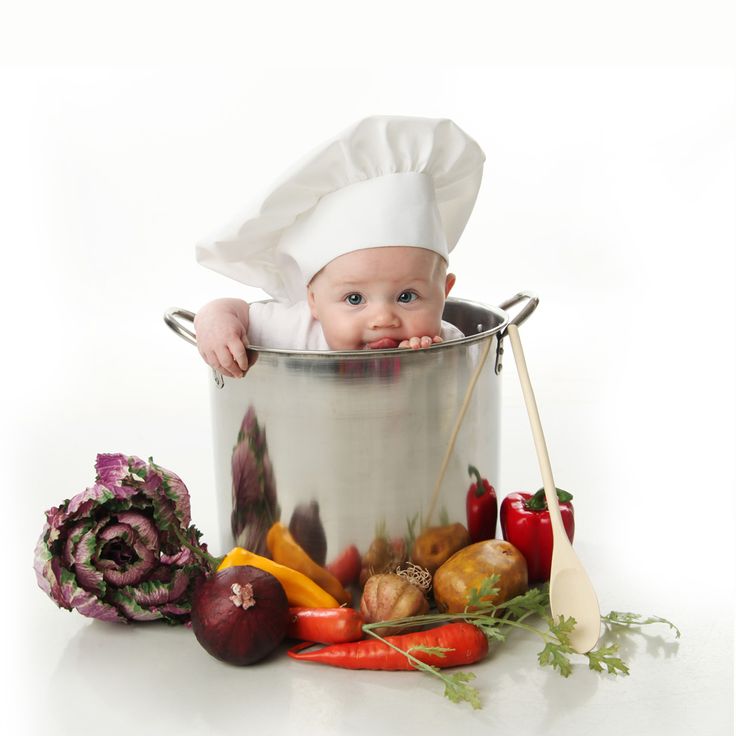
When serving sweet potato to your baby, be sure to mash well and remove the skin.
Peas
Mushy peas might not sound like a culinary delight to adults, but they’re an excellent choice for infants. These little green balls are one of the highest-protein veggies, with 4 grams per serving.
To serve, simply steam frozen peas and blend until pureed. You can even add a bit of breast milk for a thinner consistency.
As your baby becomes more of a solid food pro, try introducing these six veggies.
Broccoli
With cancer-fighting compounds and micronutrients galore, broccoli is an extremely healthy veggie for people of all ages.
Turn your baby on to this cruciferous superfood by serving steamed or roasted broccoli by itself, or add it to pasta dishes, cheesy baked potatoes, or soups cooled to room temperature.
Cauliflower
Has your little eater cut a few teeth? Now’s the time to try cooked cauliflower! The chunky texture of this veggie in a puree (or roasted and roughly mashed) offers just the right level of challenge for new chewers.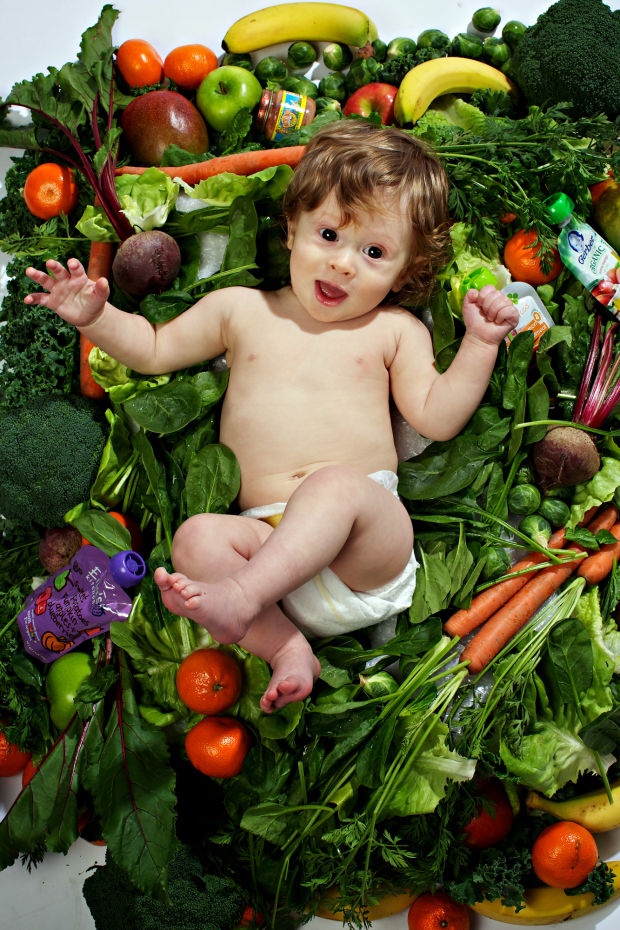
Zucchini
When the summer months roll around, take advantage of a bumper crop of zucchini by feeding some to baby. Green and yellow summer squash offer mild flavor and nutrients like manganese, potassium, and vitamin A.
Try serving your baby zucchini prepared as cooked, spiralized “zoodles” with a tomato sauce or thin-sliced and pan-sautéed with a bit of olive oil.
Tomatoes
Before long, your kiddo will likely be chowing down on all sorts of tomato-based foods like pizza and spaghetti with marinara. For now, get them started on the fresh, whole version by serving tomatoes in finely chopped pieces.
Ample water content for hydration plus vitamins C and A add to tomatoes’ value as a healthy first veggie.
Onions
Because of their pungency, you might shy away from feeding your child onions. But these aromatic alliums can be a great way to add flavor to baby’s diet without sodium or anything artificial. Try cooked onions in casseroles or mixed in with other vegetables.
Beets
We’ll be honest: Beets are an acquired taste. That said, you can make them more tempting for baby by pureeing cooked beets with fruits like blueberries or cherries.
The pigments in these colorful blends might leave baby with a red beet “mustache,” but beets’ high content of folate, manganese, and fiber are well worth it.
You can help your child take the lead in the weaning process by providing them plenty of self-feeding opportunities. Incorporate these four bite-sized, easily grasped veggies in baby-led weaning (BLW).
Butternut squash
When first starting with baby-led weaning, opt for softer foods. They’re easier for baby to gnaw, which may allay your concerns about choking. (Still, carefully supervise your baby during mealtimes.)
With their tender texture and sweet taste, pieces of cooked butternut squash are an excellent first round of BLW. Dust cooked pieces with cinnamon for even more flavor.
Bell peppers
Fun fact: Ounce for ounce, bell peppers contain more vitamin C than oranges! This important vitamin not only strengthens the immune system, it acts as an anti-inflammatory antioxidant.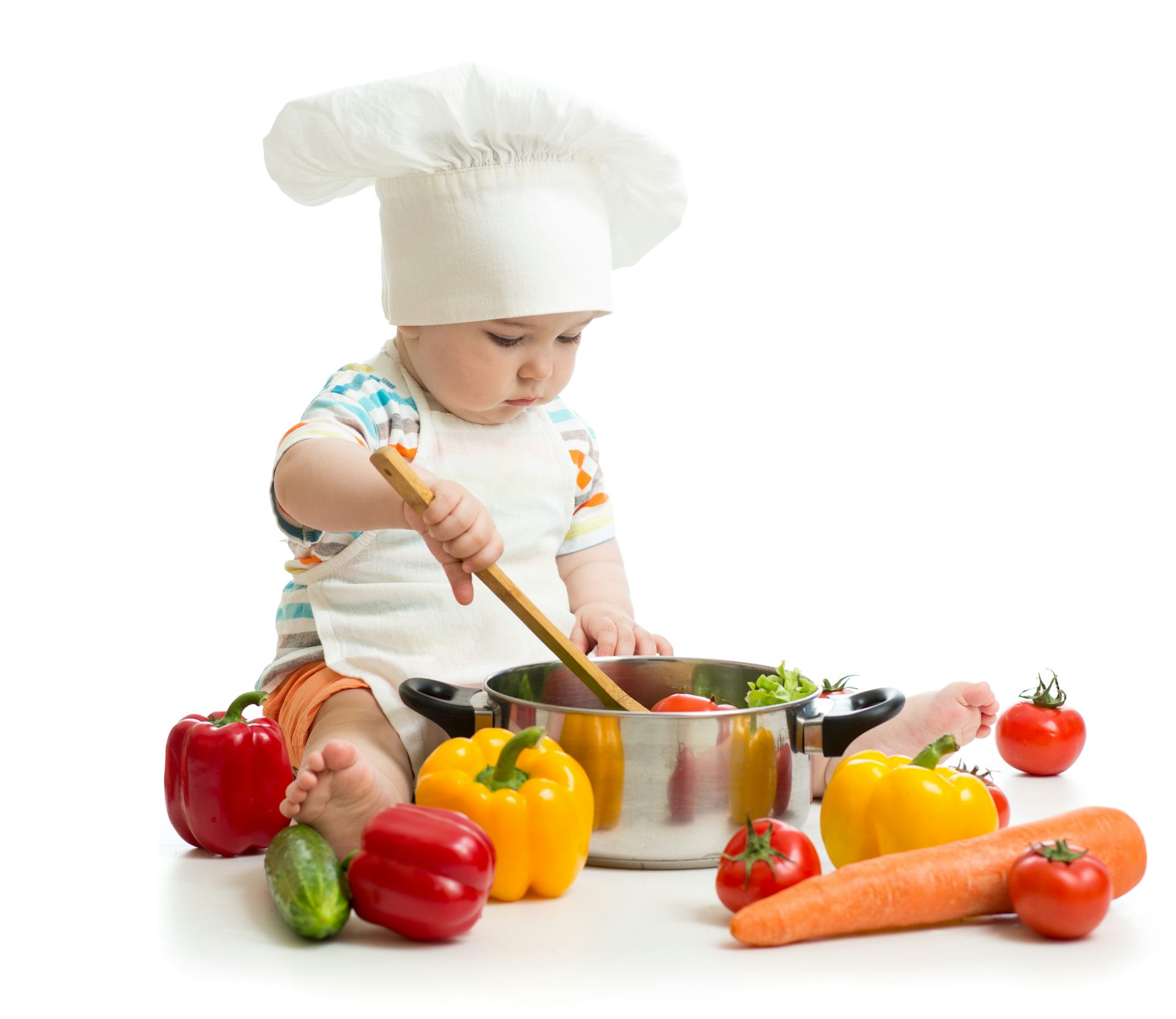
Give baby’s health a leg up by letting them self-feed diced bell peppers. If the peppers’ strong flavor gets a negative reaction, try serving them with cheese or hummus.
Cucumbers
There’s nothing quite so refreshing as a cool, crunchy cucumber. These veggies’ cooling sensation can be especially soothing for babies’ teething gums. To reduce the risk of choking, peel the skin off of cucumbers and dice them into small pieces as part of baby-led weaning.
Edamame
Everyone knows that popping edamame beans out of their shells is half the fun of eating these tender legumes. However, for baby-led weaning, start by placing shelled, slightly mashed edamame on the high chair tray. Their high protein content will fuel baby’s playtime, as well as build muscle tissue.
Vegetables are among the healthiest foods on the planet. Could anything go wrong with feeding them to your baby?
For very young children, there are some safety concerns about nitrates — compounds certain vegetables absorb from soil.
When babies consume excessive amounts of nitrates, it can lead to a condition called methemoglobinemia. Babies with this condition may develop a blue tinge on their hands, feet, and mouth, and may have fatigue and difficulty breathing.
If your baby has any of these symptoms — especially shortness of breath — seek medical attention immediately.
Root vegetables like beets and carrots and leafy greens (especially spinach) do contain relatively high levels of nitrates. But this doesn’t mean you shouldn’t feed these healthy veggies to your baby when they start solids.
Older research from 2005 shows that high amounts of nitrates from vegetables are primarily harmful to babies 3 months of age and younger — but since it’s not recommended to introduce solid foods until around 6 months, this is likely to be a nonissue.
- Baby carrots. “Baby” may be in their name, but baby carrots are not a good choice for infants. Their size and hardness make them a choking hazard.

- Raw celery. The stringy fibers of raw celery can easily lodge in a baby’s throat. If you choose to serve your baby celery, be sure it’s cooked thoroughly and cut into small pieces.
- Corn. Creamed or pureed corn is fine for infants, but avoid serving the small, chewy kernels by themselves.
- Any hard, raw vegetables. According to the American Academy of Pediatrics, chunks of raw vegetables remain a choking hazard until children reach the age of 4 years.
As with any food group, you may run into snags when introducing your child to the wide and colorful world of veggies. Although allergies to vegetables are rare and no vegetable is among the top eight food allergens, it’s always possible for a child to have an allergic reaction to any food.
If your baby has symptoms like vomiting, diarrhea, wheezing, hives, or a rash after eating a particular vegetable, talk to your pediatrician about the possibility of an allergy or food sensitivity.
Contrary to the stereotypes, getting your kid to eat their vegetables doesn’t have to be an epic battle of the wills. By introducing a wide variety of veggies and preparations from a young age, you’ll give your little one the best chance of developing a veggie-loving palate.
Even if your high chair gourmand spurns spinach or turns up a nose at turnips, don’t despair! Keep at it. The more you expose your child to any food, the more likely they are to eventually accept (and even enjoy) it.
What vegetables can be given to a child for complementary foods
- Polina Alexandrovna, what is complementary foods?
Complementary foods are foods that are different from the breast milk or formula that a child is used to receiving. Complementary foods are a gradual transition from dairy nutrition to a common table.
— In what cases is it recommended to start complementary foods with vegetables rather than cereals or fruits?
- WHO does not give specific recommendations, since different countries have different menus. The Union of Pediatricians of Russia recommends vegetable purees or cereals as the first complementary foods.
The Union of Pediatricians of Russia recommends vegetable purees or cereals as the first complementary foods.
- Introduction of complementary foods up to 6 months, constipation tendency or excessive weight gain in the child - it is recommended to start with vegetable complementary foods.
- The introduction of complementary foods at 6 months, insufficient weight gain or frequent stools in a child is a reason to prepare porridge to start complementary foods.
— What vegetables should I start complementary foods with and how to introduce a second vegetable into my baby’s complementary foods?
- For the first feeding, hypoallergenic vegetables are recommended, which are less likely to cause allergies - zucchini, cauliflower or broccoli. Which vegetable from the list will be the first, and which next - it doesn’t matter, you can focus on the feelings of the child and the convenience of the mother.
- Polina Alexandrovna, vegetable puree or juice with pulp - which is more useful, how to combine?
- Fruit and vegetable juices are not recommended as the first feeding - they have much less fiber, dietary fiber compared to vegetable purees. In addition, the sugar from the juice is absorbed quickly and the concentration of sugar in the blood rises sharply. Therefore, basically complementary foods begin with monocomponent vegetable purees.
In addition, the sugar from the juice is absorbed quickly and the concentration of sugar in the blood rises sharply. Therefore, basically complementary foods begin with monocomponent vegetable purees.
In the future, juices may be present in the baby's diet, and they can be combined with vegetables. But if the mother introduces juice, then let the child not give anything new. It is impossible to introduce several different products into one meal - if the baby is given vegetable puree and fruit juice at the same time, then with an allergic or other reaction, the mother does not understand what she came to.
— How many vegetables to give in the first feedings?
- The introduction of new products in the first feeding begins with the so-called microdose - this is ½ or one teaspoon. On the second day, the portion increases to 2-3 teaspoons. In a week, its volume is brought to the age norm. The main thing is to increase the portion gradually.
- What time of day to give vegetable complementary foods - is it considered better in the second feeding?
- By and large, this is fair and convenient - they began to give vegetables to the child for lunch and continued to do so after expanding the diet.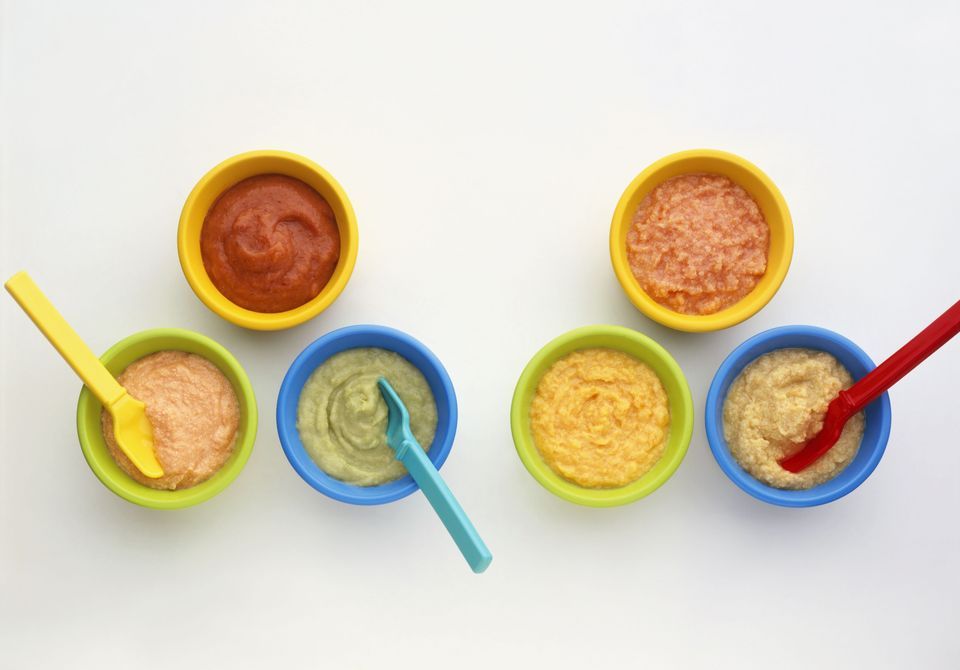 Neither mother nor child will have to change the structure of feeding and rebuild.
Neither mother nor child will have to change the structure of feeding and rebuild.
You can give such complementary foods at other times, but remember the rule - to introduce new products in the morning and monitor the reaction of the child. When the introduction of porridge begins, vegetables will shift to a later meal, and porridge to an earlier one.
- Do I need to add formula milk or breast milk to the puree?
- Breast milk and infant formula are not added to puree. But vegetables are less satisfying than dairy food, so the child can receive supplementary feeding with mother's milk or formula immediately after taking vegetable puree. In this case, it is necessary to observe the age norm for breastfeeding or artificial feeding.
- Is it correct to give vegetables first and then breast milk/formula or vice versa?
- When introducing complementary foods, the child does not yet know that, in addition to breast or bottle, you can get enough in another way.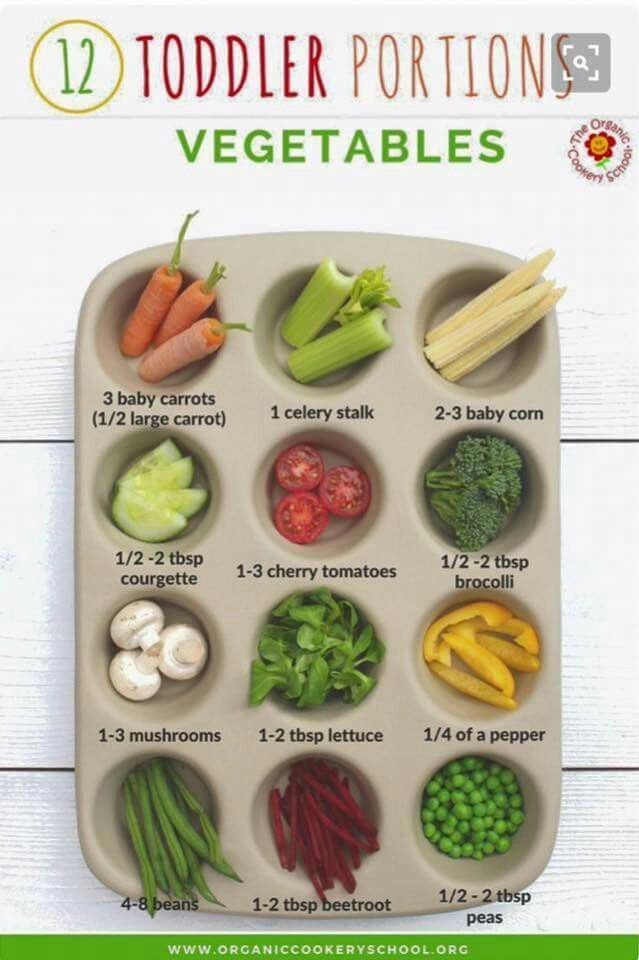 If breast or formula is given first, the baby will be full by the time mom gives vegetables. The kid with great pleasure and interest tries unusual food when he is hungry.
If breast or formula is given first, the baby will be full by the time mom gives vegetables. The kid with great pleasure and interest tries unusual food when he is hungry.
- Is there a procedure for introducing vegetables into complementary foods by months?
- The scheme and sequence of introducing vegetables for complementary foods is simple - you need to start with hypoallergenic foods, expand the diet with vegetables that are more likely to cause childhood allergies:
- zucchini, cauliflower, broccoli - 4-6 months;
- pumpkin, carrot, potato - 6 months;
- beets, tomatoes and other vegetables - 7-8 months.
Interesting: according to my mother, vegetable puree of industrial production is less tasty than homemade. In practice, many babies refuse homemade puree and are happy to eat ready-made complementary foods from the first spoon.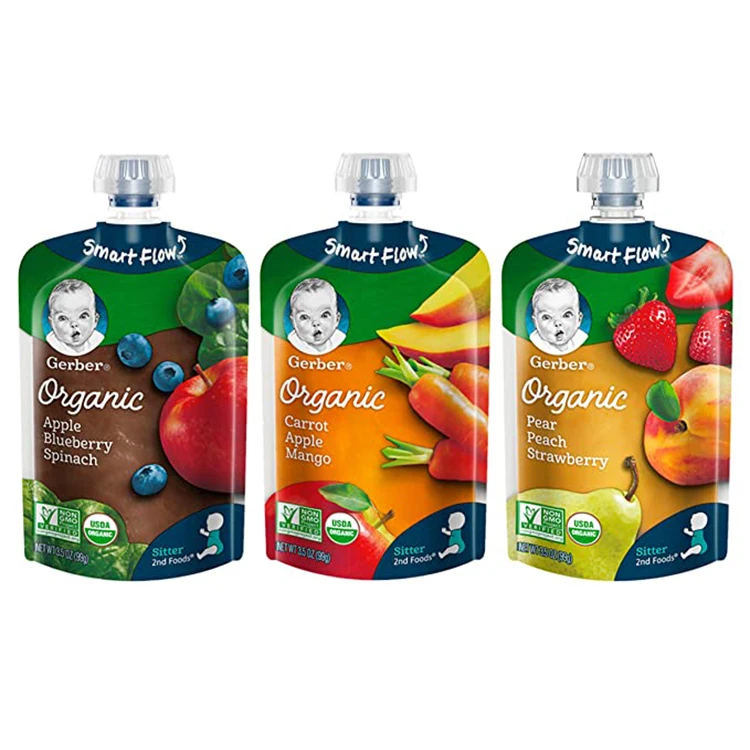
- How to cook vegetables for feeding babies on your own?
- When preparing baby food, mom needs:
- minimum water to cover vegetables;
- cook vegetables under the lid for a minimum period of time without overcooking them - this way nutrients and vitamins are preserved to the maximum;
- when grinding, add the decoction to the puree - then its consistency will not be very dense; grind the product carefully - there should be no pieces and unground parts in the puree.
- How long does the cooked puree last?
- The recommendations will be the same as for the factory puree. For more than a day, self-prepared baby food is not stored. And the food that you still plan to give your child is better not to put it in the refrigerator door with the highest possible temperature, but on the middle shelves.
- Where can I get proven recipes and which sources should I trust?
- In the nutrition of a child under one year old, there is no question of special dishes. Vegetables are boiled or steamed without salt. It is important to introduce vegetables into the child's diet according to his age. Mom can also focus on preferred flavor combinations.
Vegetables are boiled or steamed without salt. It is important to introduce vegetables into the child's diet according to his age. Mom can also focus on preferred flavor combinations.
- Polina Aleksandrovna, what vegetables should not be given to babies?
- There are no vegetables that cannot be given to a child under one year old (allergies often occur on berries and red fruits - they are not recommended to be tried). After eight months, the baby gets acquainted with almost all vegetables.
Things to look out for:
- Bright red vegetables have a higher potential for allergy. We introduce the baby to such vegetables later.
- It is difficult to choose quality vegetables. An allergic reaction may occur not to a vegetable, but to the substances with which it is processed.
Advice for mom: Use ready-made commercially produced complementary foods for children or buy vegetables from trusted sellers.
MAMAKO ® ORGANIC cereals are a combination of organic cereals and fruits and 32% ORGANIC farm goat milk.
— What if the child does not like vegetables?
- When a child is reluctant to eat vegetables, you should not force him - the more you force, the more the baby resists attempts to feed him. Your child will not immediately appreciate the vegetable you give. It is important to offer him mashed potatoes regularly and persistently enough, but not overdo it. If the child does not like one vegetable during the week, offer another. In addition, vegetable puree from different manufacturers has different tastes, and you can choose the one that your baby will like.
Advice for mom: Even if you haven't started complementary foods yet, your baby needs to be introduced to the culture of eating. Dine with your baby - he is interested in seeing what mom and dad are eating, and he should want to try adult food and join the general diet.
Dine with your baby - he is interested in seeing what mom and dad are eating, and he should want to try adult food and join the general diet.
— What vegetable dishes can be offered to older children?
- Firstly, older children eat no longer homogeneous puree. Every month we offer the child larger and denser pieces (at first small and soft, so that the baby can easily chew them, and then, when he begins to chew well enough, larger pieces).
Secondly, a child of 7-8 months gets acquainted with new dishes (soups, dairy products). And at this age, goat's milk cream soup with pumpkin or spinach is well suited for a children's diet.
At the stage of preparation for the introduction of complementary foods, it is important not to miss the food interest - you should introduce the baby to meals and introduce him to the exciting process. When your baby is ready, you can offer him hypoallergenic vegetables in a gentle vegetable puree. After the baby falls in love with some vegetables, his diet will gradually be enriched. And let the process of expanding the menu of your little gourmet be interesting along with healthy and tasty vegetable cream soups MAMAKO ® .
And let the process of expanding the menu of your little gourmet be interesting along with healthy and tasty vegetable cream soups MAMAKO ® .
* Breast milk is the best food for babies. WHO recommends exclusive breastfeeding for the first 6 months of a child's life and continued breastfeeding after complementary foods are introduced until the age of 2 years. Before introducing new products into the baby's diet, you should consult with a specialist. The material is for informational purposes and cannot replace the advice of a healthcare professional. For feeding children from birth.
10 Best Purees for First Weaning - Ranking 2023
Introduction of complementary foods is a necessary procedure for many new parents. Puree from vegetables, fruits, fish or meat is introduced into the diet of crumbs at the age of 5-6 months, when the child's digestive system can already absorb the components of the puree. Before using the first complementary foods, it is imperative to consult a pediatrician. A review will also help in choosing, which presents the best purees for the first feeding, according to doctors, users and the experience of manufacturers.
A review will also help in choosing, which presents the best purees for the first feeding, according to doctors, users and the experience of manufacturers.
Contents
How to choose puree for the first feeding
The readiness of the baby for the introduction of complementary foods is signaled by a doubling of body weight from the moment of birth, as well as the ability to eat while in an upright position. Then the question arises of which purees are better to buy for the first complementary foods. Pediatricians recommend starting with vegetable purees, as they lack fructose, which has an undesirable effect on the immature pancreas and kidneys.
Doctors advise choosing products from well-known trusted brands, as they are subject to a quality control procedure. Thus, when compiling a review of puree companies for the first complementary foods, the following factors were considered by specialists:
- Cost. The most expensive product does not mean the highest quality.
 The price is affected by the type of packaging, the cost of shipping raw materials - something that does not affect the content in any way;
The price is affected by the type of packaging, the cost of shipping raw materials - something that does not affect the content in any way; - Composition. A quality product does not contain dyes, enhancers and preservatives, as well as spices;
- Hypoallergenic and product safety;
- The degree of grinding of the components;
- Age category.
Studying the question of what kind of baby food is best for complementary foods, we analyzed the opinions and experiences of parents left on major forums and social networks. This helped determine the most purchased brands, which are most trusted.
When buying baby puree, look at the integrity of the package, the lid should not be damaged, and when opening the package, there should be a popping sound, which confirms the freshness of the product. You should also find out the appropriateness of the selected food for the age of the child. The review presents foreign and domestic companies offering top quality products.
The best domestic purees for the first feeding
You can buy vegetable puree for the first feeding from Russian manufacturers. After analyzing more than a hundred reviews, we were able to select brands that are trusted by customers.
Russian manufacturers produce food for children at the highest level at a pleasant price, due to which the products are in demand among parents. Many companies produce products from natural raw materials of their own production. 5 domestic manufacturers were selected for the rating, which proved to be leaders in the quality of baby food and popularity among mothers and fathers.
Frutonyanya
This brand is one of the most famous, most parents choose the products of the Frutonyanya company. All products undergo special testing and are recommended by the Union of Pediatricians. Frutonyanya produces vegetable puree for the first feeding. The tightness of the packaging is ensured by a lid and a dense polyethylene film, which allows you to protect the container from the ingress of dirt and dust.
The company has a continuous production cycle. Fruits and vegetables from our own farms are processed, which is an indicator of the naturalness of the products. The manufacturer has released a line in doypack packaging, now you can take food for a walk.
Advantages
- Free from salt and sugar additives;
- Quality testing;
- Low cost;
- The scale with divisions in grams allows you to see the amount of puree eaten by the baby;
- Availability of hypoallergenic series.
Defects
- Not identified.
Consumer reviews highlight low risk of allergic reactions after use as the product does not contain preservatives. For buyers, an important condition is the experience of the manufacturer. Products are manufactured by factories that have specialized in baby food for decades.
Grandma's basket
The company's products are not as advertised as Frutonyanya, but still in demand among many buyers.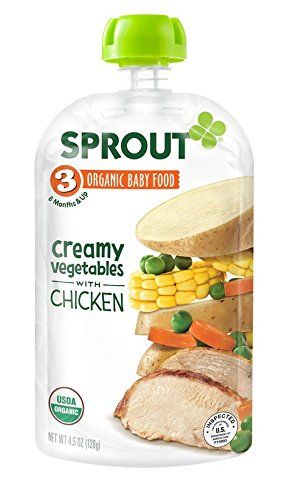 The puree complies with strict preservation purity conditions. In the manufacturing process, technologies are used to preserve the beneficial properties of products. The puree includes only boiled and pasteurized fruits and vegetables. The composition is the main ingredient and pure water.
The puree complies with strict preservation purity conditions. In the manufacturing process, technologies are used to preserve the beneficial properties of products. The puree includes only boiled and pasteurized fruits and vegetables. The composition is the main ingredient and pure water.
Choice of mashed potatoes for the first meal of zucchini, broccoli and cauliflower. The company also produces fruit products. For older children, you can buy food from cod, pink salmon and salmon. The puree has the right consistency.
Advantages
- Free from food coloring and other additives;
- Possibility to buy in soft drinking packaging;
- Environmentally friendly components;
- Uniform consistency.
Defects
- Unusual taste.
One-component purees of this brand are in special demand among buyers. They note a good consistency and the optimal amount of one serving. Not all parents like the smell of the product, but it does not interfere with children, and they eat mashed potatoes with great pleasure.
Not all parents like the smell of the product, but it does not interfere with children, and they eat mashed potatoes with great pleasure.
Diaper
Sady Pridonya recently launched this brand. The manufacturer produces nutritional formulas for children of different ages. The consumer can choose purees from fruits, vegetables or a combination. The product is presented in different containers - glass and cardboard.
The main ingredients are fruits and vegetables, while the crops are grown by the company. For the manufacture of products GMOs, dyes and preservatives are not used. The composition contains only natural products and water. And the quality of the indicators is controlled by the Russian Academy of Medical Sciences. The absence of expenses for the transportation of purchased raw materials allows us to reduce the cost, which cannot but attract.
Advantages
- Large selection of purees for babies from 4 months;
- Manufacture on high-precision equipment;
- Convenient packaging;
- Affordable rates.

Defects
- Use of sugar for some types of puree.
Users are attracted by a large assortment. In addition to mashed potatoes, you can buy fruit drinks, juices and cereals. High demand for puree from several components. It can be fruits or berries with the addition of dairy products.
Topic
The Concern occupies a leading position among domestic manufacturers of baby food. Products are made using the latest equipment. The Tema brand offers compositions with fruits, vegetables, meat, combined variations. For complementary foods, vegetable compositions of zucchini, carrots and pumpkins are suitable.
In the manufacturing process, only natural and easily digestible vegetables are used, which normalize the functioning of the digestive system. In addition to purees, the company produces juices and fermented milk products.
Advantages
- Affordable prices;
- High quality products;
- Huge assortment;
- Variety of packaging.

Defects
- Small amount of starch.
Many people like that Tema puree can be bought both in the nearest store and in the pharmacy. Also noted is the ideal consistency, the absence of unnecessary inclusions. Vegetable puree has a pleasant smell and color. Often promotions are provided on Tema puree in supermarkets.
The best foreign purees for the first feeding
A certain range of foreign manufacturers is represented on the market. Some moms and dads tend to choose them, because many companies have an excellent reputation and centuries of history. The best purees for the first feeding from foreign brands in the review are represented by five positions.
The rating of baby puree supplied to the Russian market from abroad was built primarily on the basis of pediatricians' estimates. The quality of raw materials, nutritional properties, relevance of benefits for children living in our country were taken into account.
Gerber
Products from Nestle are known for their high quality and wide range, its laboratory is one of the best in Europe. For feeding babies, mashed potatoes with one component of vegetables are suitable. The product is distinguished by a fine fraction and an environmentally friendly composition. The Gerber brand also produces food for older children. And meat purees will help make complementary foods more varied. The light texture of meat is pleasant to kids.
The manufacturer also sells multi-component products. In one puree, vegetables and milk are combined, berries are also added, enriching the child's body with organic acids, minerals, and vitamins. In addition, Gerber provides desserts made from milk with fruits.
Advantages
- 4 vegetable purees;
- Products pass approximately 250 checks;
- Convenient single serving packaging;
- Special retractable caps.
Defects
- Not identified.

Users love the manufacturer's packaging. Through the glass you can see the consistency and color of the dish. Jars have lids with a special ledge, which was developed by the company's specialists. Convenient flexible packaging pouch.
Semper
The Swedish brand produces baby food for newborns and preschool children. Not only mashed potatoes, but also cereals, juices and milk mixtures are offered to choose from. Semper offers four steps of complementary foods. For children from 4 months - monocomponent formulations. For crumbs from six months - meat mixtures and assorted fruits. Fish dishes - from 7 months. And the combination of meat and vegetables in one product is suitable for children from a year and older.
The composition does not contain thickeners and dyes, but only chopped vegetables and water. From Semper you can buy food for a snack on a walk, the first complementary foods and expanding the baby's menu.
Advantages
- The first stage contains homogenized vegetables;
- European quality level;
- Testing at every stage of production;
- Improved composition.

Defects
- Not packaged with a small portion.
Consumers believe that the brand does not offer such a high price in terms of volume. Zucchini with potatoes, zucchini with potatoes and broccoli are in special demand. There are no additional components in the vegetable mixture, except for a small amount of rice flour.
HiPP
The company has a large assortment of baby food. For the first feeding from 4 months, mixtures of zucchini, cauliflower, carrots, broccoli and pumpkin are suitable. From six months you can buy a jar of turkey, beef or rabbit meat.
Hipp canned products are distinguished by their natural composition. Mixes include chopped vegetables, fruits, meat. There is nothing else in the product except water. The contents of the jars have a thick consistency, without lumps. Food has a pleasant taste and smell. The company uses convenient, safe packaging with a bright design that children love so much.
Advantages
- Wide range for first foods;
- High quality;
- Choice of volume - 80 and 125 gr;
- Uniform consistency.
Defects
- Expensive product.
With regular consumption of the product, parents noticed that the child's stool normalizes, the intestines begin to work stably. Healthy canned food is relevant in winter, when it is difficult to purchase fresh vegetables and fruits.
Heinz
A company from the USA delivers goods to different countries of the world. In the course of work, strict control systems, innovative equipment, and the latest advances in technology are used. The applied technologies allow keeping minerals and vitamins in the composition.
Heinz offers standard first food kits. In addition to vegetables, the composition contains cornmeal. This ingredient allows you to achieve a uniform consistency. Delicious puree like most children. The company responsibly approaches the compatibility of various components in the formulations.
Delicious puree like most children. The company responsibly approaches the compatibility of various components in the formulations.
Advantages
- Meets stringent standards;
- Rich taste;
- Soft consistency;
- Large selection.
Defects
- Not identified.
Heinz baby food is recommended by pediatricians to parents, as it contains minerals and vitamins that are important for the health of the child. Fiber stimulates the digestive system. Eating creates a feeling of satiety for a long period.
The company makes baby food with the best sugar-free ingredients. Only natural saccharides are present. The products are free of gluten, salt and flavors. The puree contains corn oil, which acts as a source of omega acids. And the use of rice flour provides a better consistency, it is also rich in amino acids and fiber.
Cauliflower, zucchini, broccoli or carrots are available as first foods.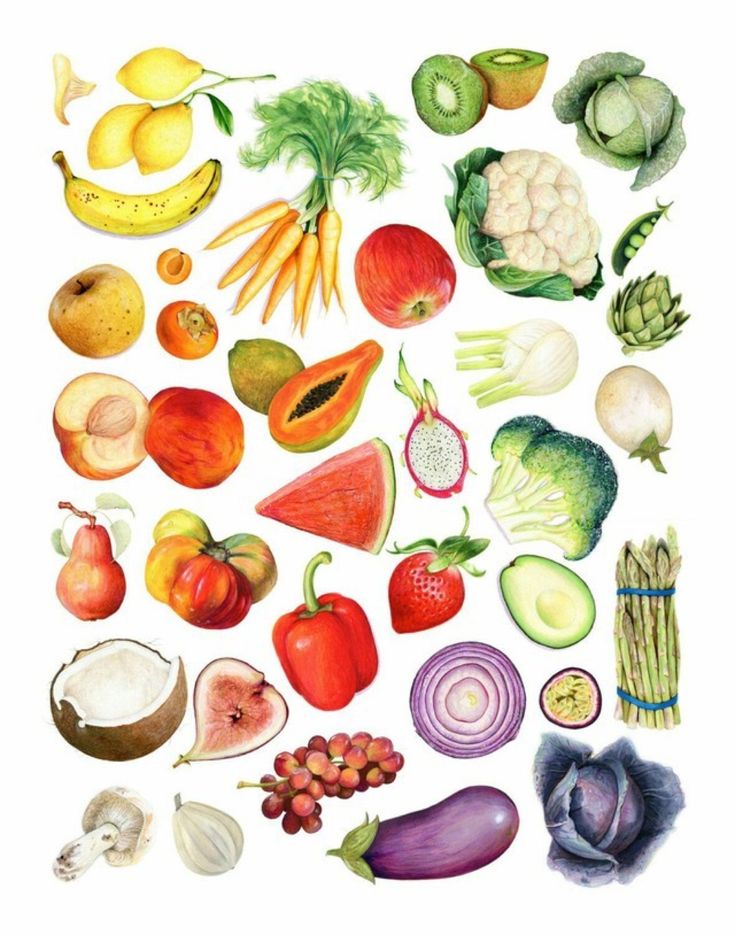 The age of the child is indicated on the package. The recipe complies with European standards regarding the nutrition of children. The products contain vitamins that are important for the full development of the crumbs.
The age of the child is indicated on the package. The recipe complies with European standards regarding the nutrition of children. The products contain vitamins that are important for the full development of the crumbs.
Advantages
- Soft consistency;
- The mixture is thoroughly ground;
- Contains useful components;
- Natural pleasant taste.
Defects
- Presence in the composition of rice flour.
Parents note the good taste of baby food from Bebivita. As well as the use of safe products for the composition. Positive reviews are found about the quality of the packaging and the affordable price.
Which puree for the first feeding is better to buy
To find out exactly whether the baby is ready to introduce complementary foods, you need to consult with your doctor. It should not be ignored if the child refuses food and spits it out. It may be worth postponing the introduction of complementary foods 1-3 weeks later.
It may be worth postponing the introduction of complementary foods 1-3 weeks later.
Before buying baby food, read the label carefully. The composition should not contain preservatives, flavor enhancers and palm oil. To restore the intestinal microflora, products with the addition of vitamins are suitable. It is important to look at the expiration date. And also choose content that is well absorbed at a certain age.
According to buyers and pediatricians, the following judgments about manufacturers can be distinguished:
- From inexpensive mashed potatoes - products of the company "Babushkino Lukoshko";
- Product for children of any age can be purchased from the manufacturer "Spelenok";
- Puree for children from 5 months is offered by the Tema company;
- Food from Gerber are suitable for those who appreciate the convenience of packaging;
- Premium products include mashed potatoes from the Semper brand;
- Natural purée without additional ingredients available from Hipp;
- Heinz offers the most vitamin purees;
- Food from Agushi and Hipp is recommended to stabilize the digestive system.





